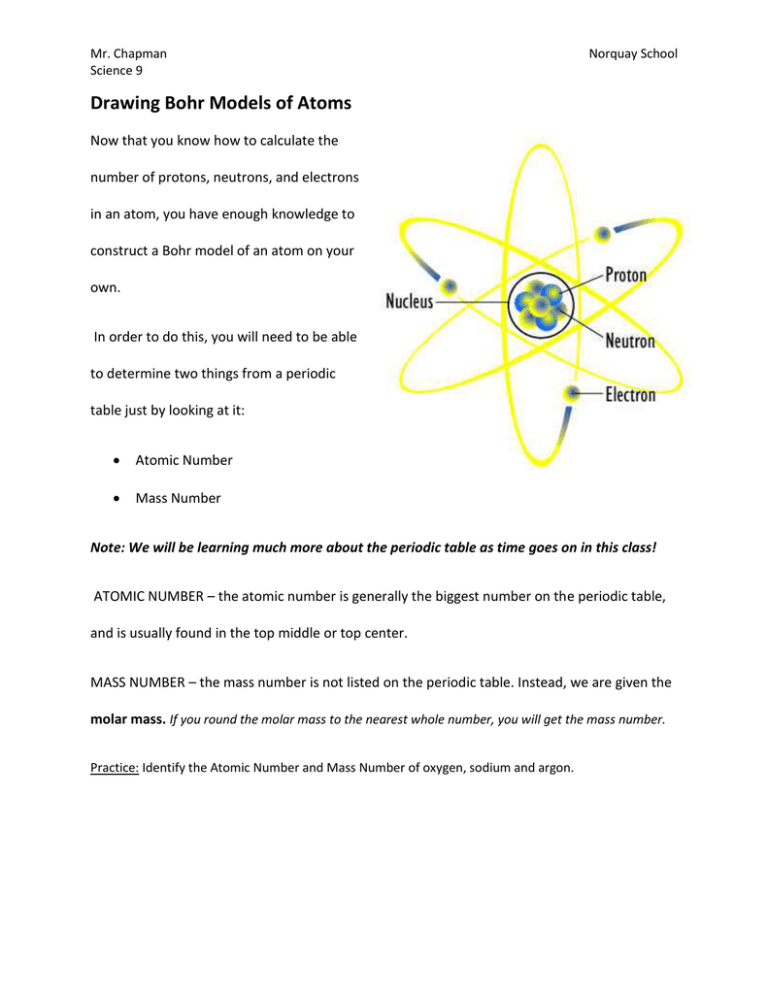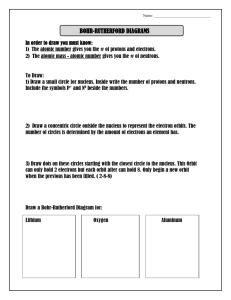Drawing Bohr Models of Atoms
advertisement

Mr. Chapman Science 9 Norquay School Drawing Bohr Models of Atoms Now that you know how to calculate the number of protons, neutrons, and electrons in an atom, you have enough knowledge to construct a Bohr model of an atom on your own. In order to do this, you will need to be able to determine two things from a periodic table just by looking at it: Atomic Number Mass Number Note: We will be learning much more about the periodic table as time goes on in this class! ATOMIC NUMBER – the atomic number is generally the biggest number on the periodic table, and is usually found in the top middle or top center. MASS NUMBER – the mass number is not listed on the periodic table. Instead, we are given the molar mass. If you round the molar mass to the nearest whole number, you will get the mass number. Practice: Identify the Atomic Number and Mass Number of oxygen, sodium and argon. Mr. Chapman Science 9 Norquay School Steps to Drawing a Bohr Model of an Atom 1. Identify the number of protons, neutrons and electrons in the atom. Doing this ahead of time makes it easier to do things. 2. Draw the nucleus of the atom. Remember that the nucleus contains the protons and neutrons of the atom. You can use numbers and symbols to represent the nucleus of the atom. Example: If a nucleus contains 8 protons and 8 neutrons, you can write 8n and 8p. 3. Draw the first orbit around the nucleus. The orbits can hold different numbers of electrons. The first orbit can hold two electrons, the second orbit can hold 8 electrons, and the third orbit can hold 8 electrons. Decide how many orbits you need for the number of electrons you have. 4. Fill each orbit with electrons. Each electron takes up a “corner” of the orbit before they start pairing up. Observe the examples to see how the orbits get filled: Examples: Draw a Bohr model for an oxygen atom. After that, draw a Bohr model for a sulfur atom.







